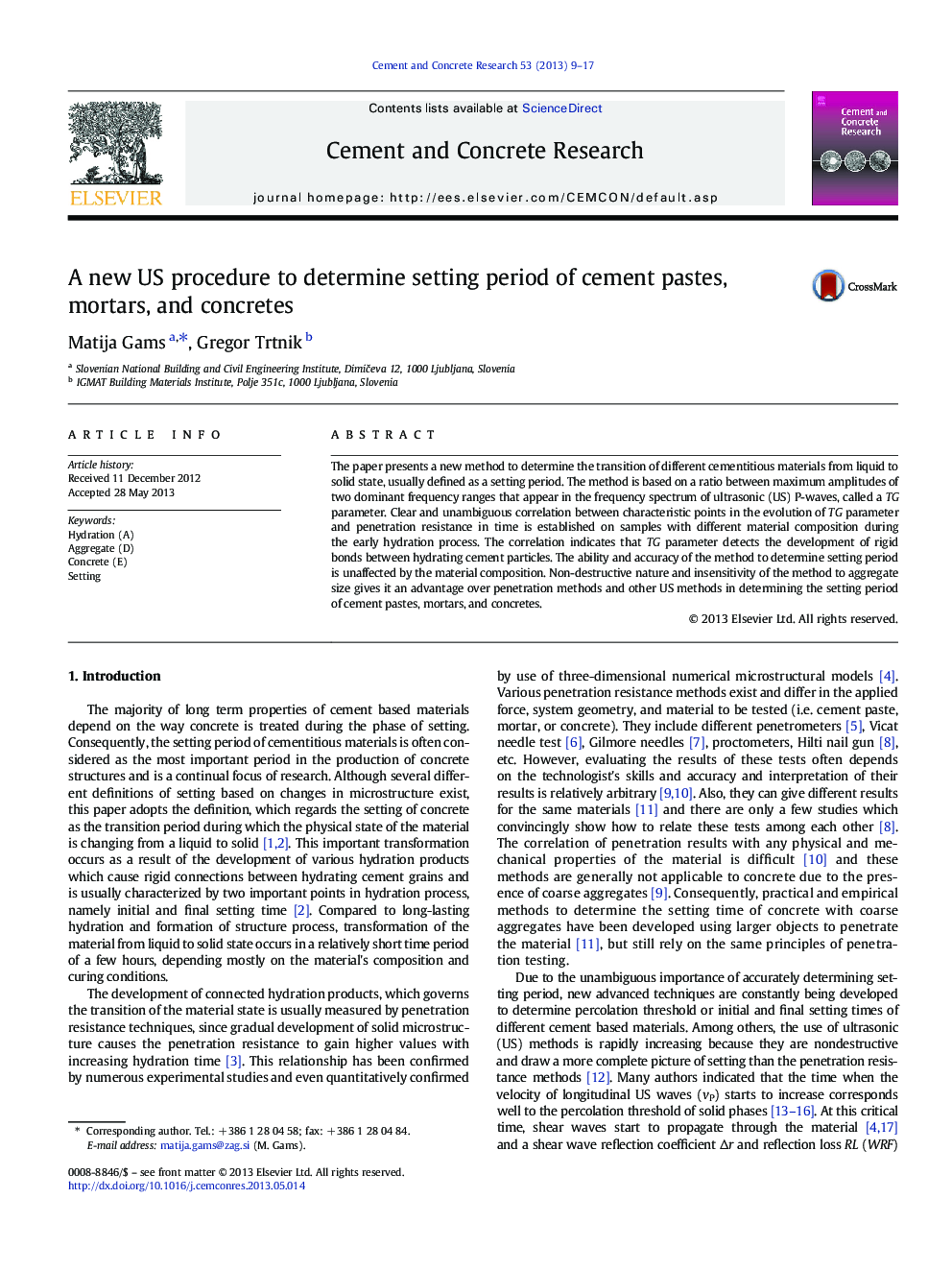| Article ID | Journal | Published Year | Pages | File Type |
|---|---|---|---|---|
| 1456406 | Cement and Concrete Research | 2013 | 9 Pages |
•New method based on frequency spectrum of US P-waves to monitor structure development.•Method accurately shows intensive setting process including initial and final set.•Strong correlation between the method and the penetration resistance during setting.•Applicable to cement pastes, mortars, and concretes.•Non-destructive, easy to use, and fully automatic method for laboratory or the field.
The paper presents a new method to determine the transition of different cementitious materials from liquid to solid state, usually defined as a setting period. The method is based on a ratio between maximum amplitudes of two dominant frequency ranges that appear in the frequency spectrum of ultrasonic (US) P-waves, called a TG parameter. Clear and unambiguous correlation between characteristic points in the evolution of TG parameter and penetration resistance in time is established on samples with different material composition during the early hydration process. The correlation indicates that TG parameter detects the development of rigid bonds between hydrating cement particles. The ability and accuracy of the method to determine setting period is unaffected by the material composition. Non-destructive nature and insensitivity of the method to aggregate size gives it an advantage over penetration methods and other US methods in determining the setting period of cement pastes, mortars, and concretes.
